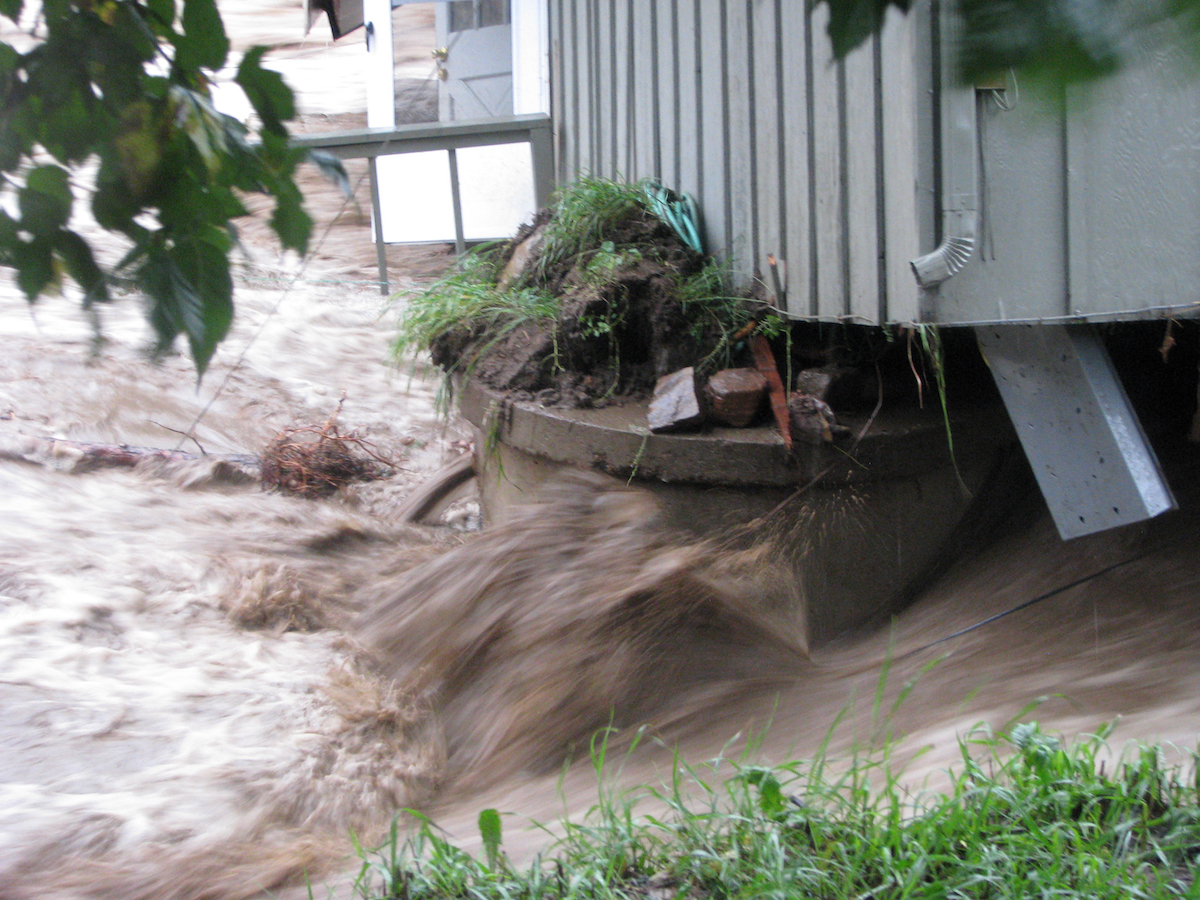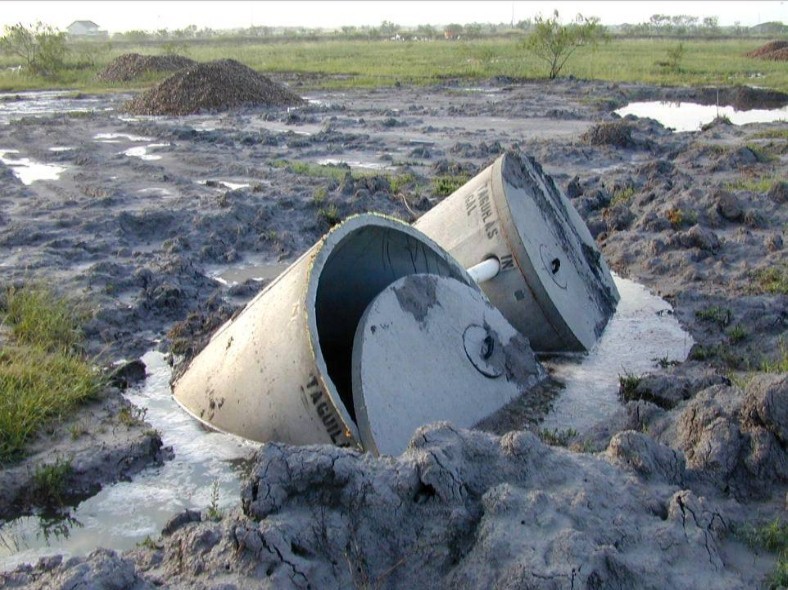With the recent and at the time of this posting current flooding from Hurricane Florence, the Onsite Installer printed an article that discusses “How to Access and Rehabilitate Flooded Onsite Systems“. The article discusses some of the things to do during a flood, what to look for during and after the flood, when the use of the system should begin again, and what to do if the system is damaged or destroyed. I have copied the article below from the Onsite Installer Magazine, September 24, 2018 and written by Sara Heger, Ph.D. and Jim Anderson, Ph.D.
*** *** *** *** *** ***
The Southeastern United States is currently facing the arduous task of recovery and rebuilding in the aftermath of Hurricane Florence. Along with unexpected natural disaster, dealing with seasonal floods is also an issue in many parts of the country. Our experts, Jim Anderson and Sara Heger, frequently get asked about how to recover an onsite system that has been damaged by floodwaters, so we rounded up their best tips for dealing with flooded septic systems.
There are several primary reasons to worry about flooding:
- The house is connected to the system by piping that can carry sewage from the tanks in the system back into the house during some flood events. This can cause significant physical damage and present a health hazard from wastewater carrying disease-causing bacteria and viruses.
- Flooding can cause long-term damage to the system, creating the need for repair or replacement.
- There can be environmental and water-quality damage if untreated wastewater is released into the environment.
Once heavy rains start to fall and a flood is underway, tell homeowners to cease water usage going to the system. Depending on the elevation of the septic tank and floodwaters, the tank can be used as a holding tank. The amount of damage to the system is related to the elevation of the flooding over the system combined with the length of time the system is flooded.
The system should not be used until the soil has adequately dried to allow sewage to be absorbed and not back up. This may take several weeks. The system’s user should try to conserve water until the system is completely dry.
When evaluating systems during flooding, make sure all inspection ports, lids, and covers are properly capped and in place. Pumps and controls in the system can be removed and stored, and remember to shut off electricity to the system. There should be no connections between floor or foundation drains in the house to the system where water can drain through the system.
There is potential for damage to the system; however, action can be taken after the flooding to minimize the damage. After floodwaters recede, you should complete a comprehensive system inspection and assessment before the system is put back into operation. This should include the following steps:
- Pump the tank(s) and treatment units as soon as possible after the flood recedes and prior to resuming use of the system. Be sure to pump both the septic tank and the pump/lift station (if one is present). Silt and other debris may have collected in the septic tank while it was underwater, which could ultimately find its way to and damage the soil treatment systems. Additionally, a variety of substances such as pesticides, petroleum products and other contaminants may have entered the tank. These contaminants could be detrimental to the beneficial bacteria in both the tank and the soil treatment systems and therefore need to be removed. However, it is not advisable to leave the septic tank empty after pumping if the soil around the area of the tank(s) is saturated; this can cause the tank to “float” toward the ground’s surface if the soil’s water pressure remains high. In this case, you may want to fill the tank with clean water. Effluent screens (if present) should be cleaned at this time as well.
- All parts of the system should be inspected for damage. After pumping, the septic tank and other tanks — such as pump tanks — should be inspected for any structural damage. Pumps should be inspected, reinstalled and recalibrated for flow.
- Drainfields under the surface should be all right if excessive water was not delivered to the drainfield during the flood event. And if there are no openings, silt and other debris should not have entered the drainfield. It should not be used, however, until the groundwater has subsided and vertical separation distance is established. Saturated soil is especially susceptible to compaction, which can lead to system failure. Avoid driving or operating equipment over the drainfield.
- If the system includes pumps and a pressure distribution system, distribution laterals should be jetted and cleaned.
- Protect the soil treatment system from compaction by keeping all traffic off the area. Often there will be a considerable traffic increase around a flooded home as flood cleanup and home restoration occur. This traffic could include, but is not limited to, foot traffic, debris piles, dumpsters, and heavy equipment. If necessary (and feasible), fence off the system to protect it.
- Check electrical connections for damage or wear before turning electricity back on. Reinstall, recalibrate, and test all pumps and controls before putting the system back in service.
- Check that the septic tank manhole cover is secure and that inspection ports have not been blocked or damaged. Check for animal damage or intrusion in the soil treatment area.
- Check the vegetation over the septic tank and soil treatment area. Repair erosion damage; sod or reseed as necessary to provide a good plant cover. You may need to mulch the area to provide insulation if the grass has not become well-established before winter.
- Inside the home, be sure the property owner disinfects thoroughly if sewage backed up into the house or garage. Pathogens in wastewater can cause serious illness, such as dysentery, hepatitis, and other waterborne illnesses. However, avoid flushing these disinfectants into drains that empty into the septic system. The disinfectants could be detrimental to the beneficial bacteria in both the tank and the soil treatment systems. If they are discharged into the septic system, it is best to pump the tanks (a second time if floodwaters were previously pumped) to avoid discharging these chemicals into the soil portion of the septic system.
- After the floodwater has receded from the soil treatment area and the surrounding soil has had a chance to dry, if the soil treatment systems still will not accept effluent from the septic tank, the pipes or soil might be “plugged.” The systems will then need a thorough investigation to determine if a repair or new system is needed.
The overall evaluation should include a check of the wastewater to ensure it is flowing properly through all system components. You may have to run a hydraulic load test on the soil treatment part of the system.
About a month after the system has been restarted, you should do a follow-up visit to check whether the system has continued to operate properly. Check pumps and controls, and re-evaluate pump calibrations to ensure they are delivering the correct amount of effluent.
If the system was destroyed
Often floodwaters can cause components of a septic system to be partially or completely washed away. The owner of such a system should not assume that soil or other “fill” can be added and new system components constructed. Heavy rains can cause slides to partially or completely cover septic system components with rock, mud or silt. These slides can affect the operational integrity of the system, especially the soil treatment systems. Care needs to be taken during debris removal from the area on or around a septic system in order to protect system components, taking special care to keep vehicle and equipment traffic off the soil treatment system to avoid compaction. If the soil treatment system is saturated or has standing water long after other areas have dried out, there may be a long-term problem indirectly related to the flood.

